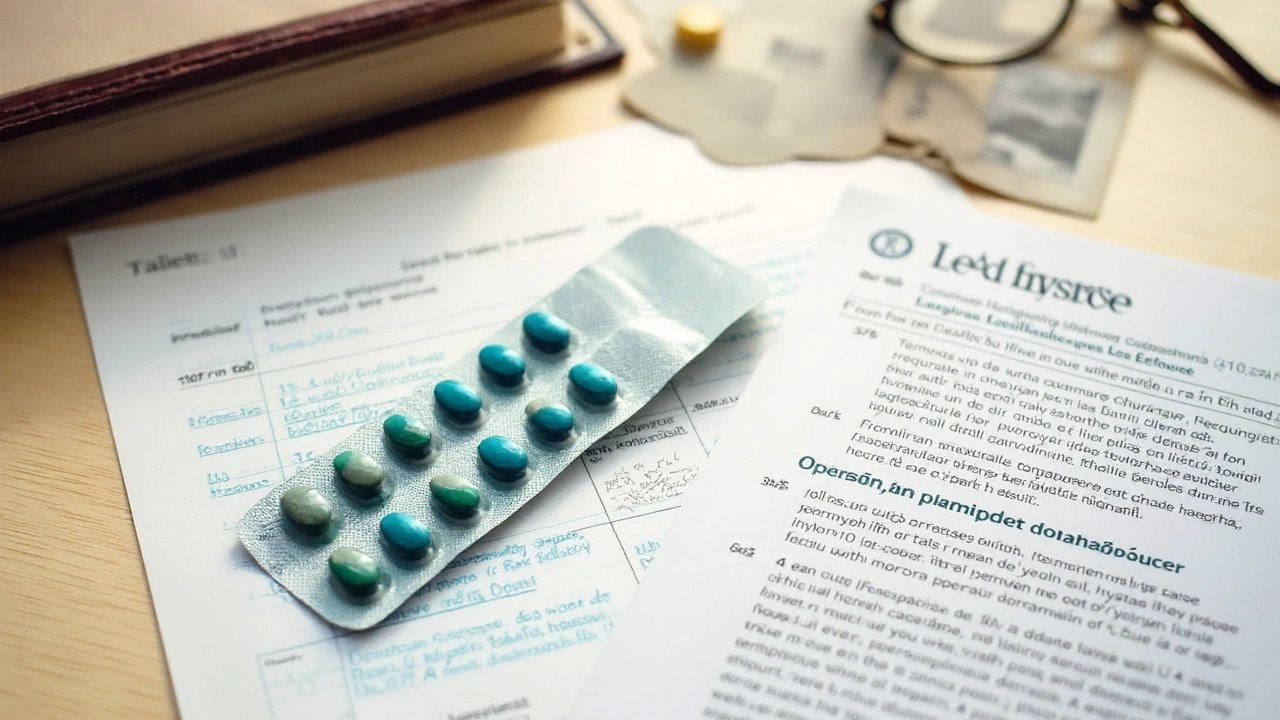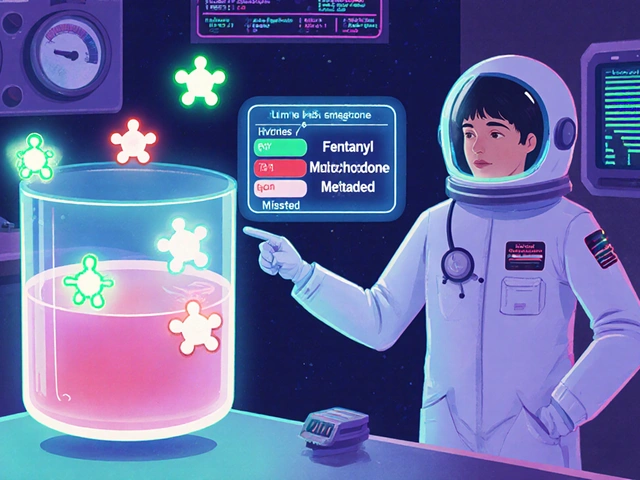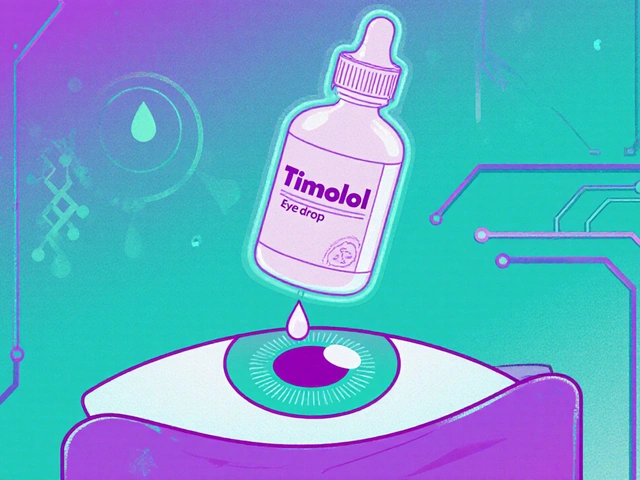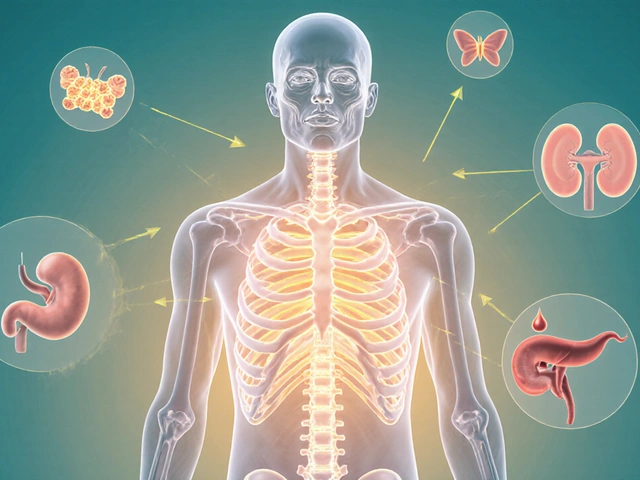
A lot of people find themselves forgetting small things—where you left your keys, what you wanted at the store, or the name of an old friend. Forgetting now and then is pretty normal. But for some, these lapses start interfering with daily life. Families begin asking questions, and anxieties creep in about words like Alzheimer’s or dementia. Hidden in medicine cabinets around the world is a drug with a slightly mysterious name: Reminyl.
You might see the name galantamine on the box, which is the actual substance doing the work. Reminyl has become part of the routine for many older adults diagnosed with Alzheimer’s disease. The medication promises—at least to some—slower memory loss, better thinking, and a shot at normalcy for a bit longer. The story of Reminyl isn’t just about chemistry: it’s full of hope, some frustration, and real debate around what it can realistically offer.
What Is Reminyl and How Does It Work?
Reminyl, or galantamine, actually has roots in nature. Scientists first pulled galantamine out of the snowdrop flower (yes, the kind you might have seen poking through frosty gardens). Since the 1950s, it’s been used for different things, but now it’s mainly prescribed for mild to moderate Alzheimer’s disease. Here’s where it gets interesting: galantamine is a cholinesterase inhibitor. What does that even mean? It blocks an enzyme that breaks down acetylcholine, a brain chemical crucial for learning and memory. More acetylcholine in your system makes it easier for brain cells to talk to each other, which is something Alzheimer’s disease slowly wrecks.
Treating Alzheimer’s isn’t about stopping the disease—because nobody’s figured out how to do that yet. But slowing things down just a bit, so someone can remember their children’s names, or the way home from the park, can mean everything to a family. Reminyl isn’t a cure, but it’s one of the handful of options doctors offer when brains start slipping.
Unlike some memory-boosters, galantamine is also believed to act on certain brain receptors (nicotinic acetylcholine receptors) that might help moods and alertness. Some studies say yes, some aren’t so sure, but the dual action makes it stand out a bit. It’s usually given in tablet or liquid form, and sometimes as an extended-release capsule you swallow just once a day. The dose typically starts low to avoid stomach upset—one of the big issues with all cholinesterase inhibitors. People may start on 8 mg per day, and then their doctor bumps it up slowly.
What’s really worth knowing? This stuff isn’t for everyone. People with severe liver or kidney issues might need a different game plan, and it can interact with a surprising number of other meds (blood pressure pills, antidepressants, even antihistamines). So it’s not something to pick up over the counter and experiment with.

Benefits and Challenges of Using Reminyl
So what can you actually expect after a Reminyl prescription? Let’s get real: most people won’t suddenly go back to how they were at 45. But what’s been seen—over and over—are subtle victories. Some people notice less confusion. Maybe they follow conversations a bit better. A daughter might say, "Dad remembered my birthday this year." It sounds small, but these moments matter so much more when they become rare.
Clinical trials point out that Reminyl offers statistically significant, but modest, improvements for memory, attention, language, and some basic daily activities (like dressing or making coffee) for those with mild to moderate Alzheimer’s. According to a big review published by the Cochrane Collaboration, changes were measurable for a good number of patients after six months of use. That’s not magic. That’s just making the most of what’s possible, given the cards on the table.
But it wouldn’t be fair to skip the downsides. Just over a third of people starting galantamine report side effects, usually right at the beginning. Nausea and vomiting lead the pack—sometimes enough that folks say, "No thanks, I can’t do this." Less common but possible: slow heart rate, fainting, or even skin rashes. Stomach symptoms usually shrink if doctors "go low and slow" with the dose escalation, and taking it with breakfast can help. And for folks hoping for better memory, it’s easy to set expectations way too high. If you’re using Reminyl, tracking subtle changes weekly—like making tea unaided, or recognizing a neighbor’s face—gives a better sense of the real impact. Families often keep a journal for these little wins.
It’s also interesting that galantamine has been explored for other kinds of memory loss, like vascular dementia (caused by poor blood flow in the brain) or even Parkinson’s-related problems. So far, the results there haven’t been dramatic enough for formal approval, but some neurologists still give it a try when nothing else is working.
One tip: patience matters. The first couple of weeks can feel like guesswork, with stomach complaints and little change in thinking. But by about three months, any real benefits usually start to show. If not, it’s reasonable to reassess with the neurologist and maybe pivot to another medication.

Practical Tips and Real-World Advice for Reminyl Users
Getting the most out of Reminyl takes some practical planning. It’s not just "take the pill and wait." Here’s what real families and patients have figured out over the years:
- Consistency works wonders: Take your dose at roughly the same time each day, preferably with food. Skipping or doubling up will just make side effects worse.
- Start a "memory snapshot" journal at the very beginning—tracking things like missed appointments, confusion episodes, or how easy it is to have a phone conversation. Look for small changes month to month, not day to day.
- If stomach trouble pops up, ask about starting even slower. Sometimes, doctors will drop the initial dose to lessen symptoms and then raise it after a week or two.
- If Reminyl is paired with other Alzheimer’s drugs (like memantine), ask your doc if any dosing adjustments are needed.
- Watch for new symptoms: More confusion, sudden falls, heart palpitations—don’t brush these off. They might mean the dose is too high or there’s an interaction.
- Let everyone who is part of your health care team know you’re on Reminyl. Bring a list to appointments—surprise drug interactions are a real thing!
- Stay hydrated. Nausea and vomiting can dehydrate older adults quickly. Sipping small amounts of water throughout the day helps.
- Store the medication out of sight and reach of kids and pets—like all prescription meds.
Some caregivers get creative. They might link the morning dose with another habit (like setting the coffee pot), or use a pill organizer to stay on track. Others set reminders on their phone, or ask a friend to check in. It’s normal to feel frustrated at first. Create small, repeatable rituals—every bit helps when memory isn’t what it used to be.
There’s a lot of talk online about supplementing galantamine with "brain-boosting" foods and lifestyle tweaks. There’s no magic bullet, but a Mediterranean-style diet, regular walks, and staying socially connected definitely support brain health. They won’t reverse Alzheimer’s, but they do help people feel their best.
Budget matters too: Reminyl isn’t always cheap, especially for the brand-name version. Many can switch to generic galantamine, which works exactly the same way. Pharmacies can usually help sort out insurance or savings programs. Don’t be embarrassed to ask!
And one quirky fact: In a few small studies, galantamine has shown effects beyond memory—like reducing sleep disturbances in some patients. Nobody’s sure why, but it’s a happy bonus for a handful of folks who are up at all hours, restless and irritable. Sleep is precious, especially for families living with dementia.
Remember, Reminyl isn’t about miracles—but for many people, holding on to a sense of self or routine, even a little longer, makes all the difference. Every good day counts.
Musa Bwanali
Thanks for the clear breakdown — this is the kind of practical write-up families need.
Small tip from experience: set the dose with breakfast and pair it with another morning ritual so it becomes automatic. That dramatically cuts down on missed doses and the stomach upset that panics a lot of carers.
Also, don’t forget to track simple functional wins — not just tests. If someone starts making their own tea or remembers a recent appointment, write it down. Those are the wins that tell you the drug might be helping.
Allison Sprague
I appreciate the article but a few things needed clearer phrasing.
The sentence about "blocking an enzyme that breaks down acetylcholine" should specify acetylcholinesterase — it's not pedantry, it's precision. Also, when you say "some studies say yes, some aren’t so sure," link or cite at least one meta-analysis or give dates. Readers deserve to know whether the evidence is from ten years ago or last month.
On side effects: stating that "just over a third" of people report them is fine, but you should clarify whether that figure is from clinical trials or real-world registries. That matters because trial participants are often screened for vulnerabilities.
Finally, the cost note is useful but vague. Suggesting to "ask about generics" is okay — but include examples of what to ask insurers for, like prior authorization or tier exceptions.
leo calzoni
This is overhyped. It's a modest drug with modest benefit and glowing testimonials don't change stats.
If someone expects a miracle, they're setting themselves up for disappointment. The correct approach is to evaluate cognition objectively after a reasonable trial, not cling to anecdotes.
KaCee Weber
Oh wow, this topic touches so many parts of life, and honestly I could talk about it for ages because it’s not just a pill — it’s routines, relationships, grief, logistics, and tiny sparks of joy all mixed up together 😊
First, the emotional side: giving someone a medication like this can feel like you're doing something tangible in a situation that often has so little control. That matters. Families get to feel proactive, which can ease the helplessness a bit. But that same action can also bring unrealistic hopes, so it's important to hold both hope and realism at once. That's a difficult balancing act, and it takes time to find your footing.
Second, the day-to-day practicalities: linking medication to other rituals really helps — coffee, brushing teeth, feeding the cat — anything consistent. Try visual cues too: a small tray by the kettle with the pill box, a note on the fridge. Simple external memory aids often outperform the best intentions because they remove the need to remember to remember.
Third, communication matters. When multiple people help with care, everyone needs to know what to watch for and how to report changes. I’ve seen families create a shared chart where they note side effects, mood, and two small wins each week. It sounds silly, but it creates patterns you can actually use when talking with a neurologist.
Fourth, be patient. Some folks feel nauseous for a week or two and then settle. Others quit early and later regret it because there were subtle benefits missed. If you can, try to talk to your clinician about a slower titration and a clear reassessment plan at three months.
Fifth, lifestyle matters a lot: regular walks, socializing, a Mediterranean-ish diet, sleep routines — they don't replace meds but they amplify well-being. If budgeting is a worry, generics are usually identical in effect and many pharmacies have discount programs; sometimes a phone call to customer service is all it takes to find savings.
And lastly, celebrate small things. When the person you love has a clearer moment, say so. Laugh about it. Record it. Memory loss steals little moments; preserving them is part of what makes treatments worth trying.
Sending empathy and practical vibes to anyone dealing with this. You're doing the right thing by gathering info and asking questions. 💛
jess belcher
Exactly.
Sriram K
Quick clinical note from someone who sees this regularly: starting low and titrating slowly is the single best trick to reduce early discontinuation.
Typical approach is 4–8 mg at night or with breakfast for the first 2–4 weeks, then increase as tolerated. Monitor heart rate and GI symptoms; check for interactions with anticholinergic meds, beta-blockers, and certain antidepressants. If a patient has significant renal or hepatic impairment, dose adjustments are often necessary.
Also, document baseline function before starting therapy. Use a simple activities-of-daily-living checklist and repeat it at three months. If there’s no measurable benefit and side effects persist, it’s reasonable to stop.
Deborah Summerfelt
Interesting clinical notes, but I always wonder: are we treating the patient or the anxiety of the family? There's a philosophical difference here. One path is about pharmacology and measurable endpoints; the other is about comfort, routine, and the small illusions that keep people moving through hard days.
Medication can be part of healing, sure, but sometimes I think we medicalize things that might be better tended by conversation, presence, and a good schedule. Not saying don't use the drug — just don't let it become the only thing.
Maud Pauwels
Good reminder to set boundaries with well-meaning advice and keep the care plan simple.
If taking Reminyl is causing more chaos than calm, it’s okay to pause and reassess. Quiet, predictable routines often help the person more than a dozen supplements and constant experimentation.
Scott Richardson
All this sounds fine until you hit the bill.
Healthcare systems vary, but in many places the meds, neurologist visits, and ongoing monitoring eat up budgets fast. If someone’s paying out of pocket, consider whether the modest cognitive gains are worth the recurring cost. Sometimes simpler low-cost supports deliver comparable quality of life improvements.
No shame in asking the hard financial questions first.
Laurie Princiotto
Exactly — money matters, and people pretending otherwise are tone-deaf :/
Also, quick heads-up: meds can change mood and sleep, so watch for odd shifts in personality. That’s when you need to loop the doc in fast. Sometimes the fix is trivial, sometimes it’s not, but ignoring it makes everything worse.
Keep receipts, keep logs, and keep your temper in check when things get messy — it helps more than you think :)





Write a comment